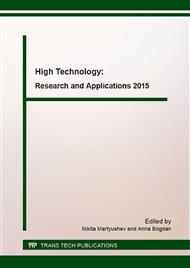p.776
p.781
p.785
p.789
p.794
p.798
p.805
p.811
p.816
Influence of Mineral Salts on the Production of Antibiotics Phenazine Series from Pseudomonas Aeruginosa
Abstract:
Phenazines represent a group of heterocyclic nitrogen-containing compounds showing a broad spectrum of antibiotic properties. Phenazines are studied extensively for their further application in plant disease management. Pseudomonas aeruginosa produce phenazine compounds as the secondary metabolites. In this paper a complex of phenazine series antibiotics from the culture of Pseudomonas aeruginosa was isolated and studied. It was established that the complex represented by phenazine-1-carboxylic acid and 2-hydroxyphenazine. The influence of various mineral salts to produce phenazine was investigated. Inhibitors and cofactors of the biosynthesis of antibiotics phenazine series were determined.
Info:
Periodical:
Pages:
794-797
Citation:
Online since:
February 2016
Authors:
Keywords:
Price:
Сopyright:
© 2016 Trans Tech Publications Ltd. All Rights Reserved
Share:
Citation:


